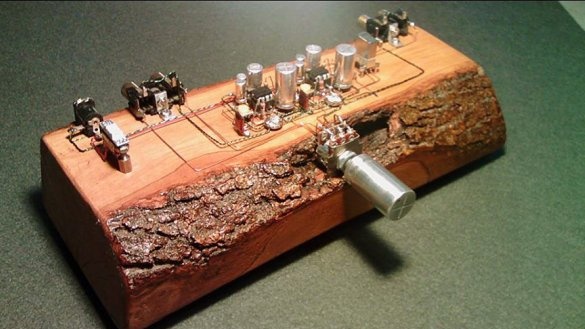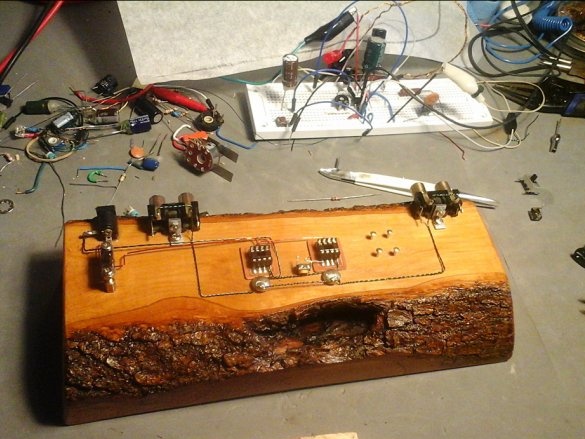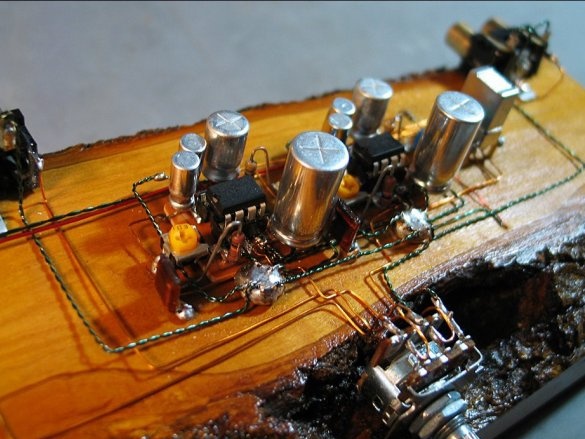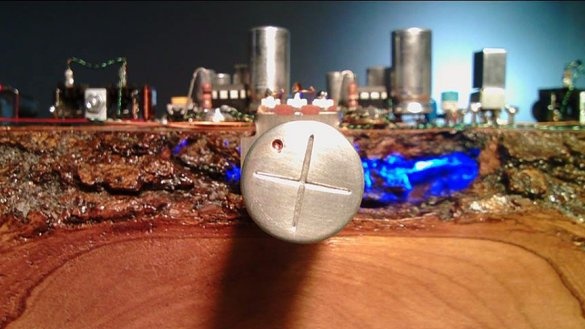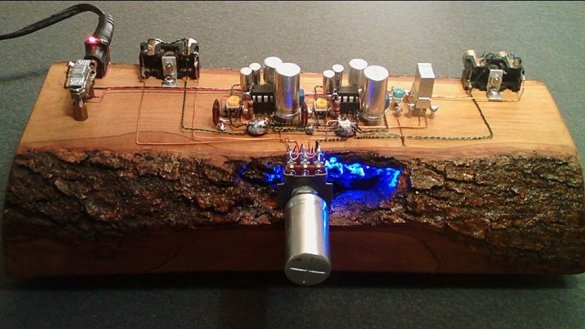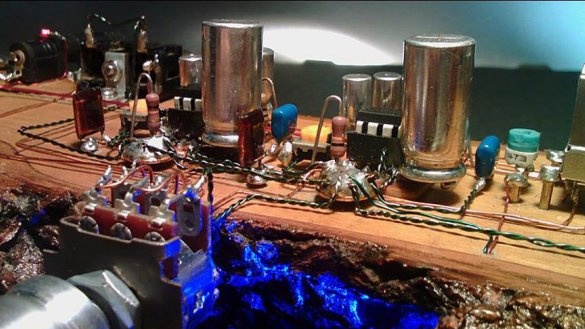The author under the nickname carbono.silício (translated as silicon carbide - an abrasive and at the same time a semiconductor that was used at one time even in LEDs) assembled, at first glance, an ordinary stereo amplifier, each channel of which contains one LM386 chip. But this homemade It is not only a utilitarian object, but also a work of art. The device is assembled, firstly, on a stand made of ivy wood covered with shellac, and secondly, by volumetric installation, giving it a special, unique “sculpturality”. The scheme of both stereo channels is standard, from a datasheet to a microcircuit, you can see it, for example,. There are two versions of this scheme, with a fixed and adjustable (and simultaneously increased) gain:
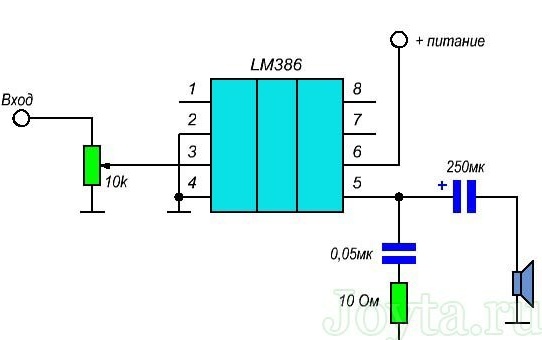
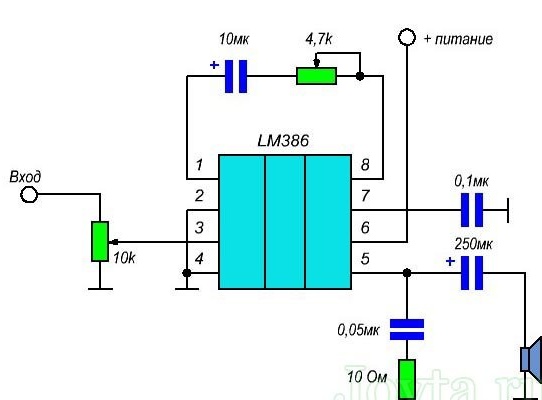
Taking a piece of ivy wood, the master is not particularly and intervenes in its shape. Only makes two surfaces flat for convenience, that's all. Then he covers the resulting stand with shellac and proceeds to place the components, starting with a connector for the power supply, switch, input and output sockets of the RCA type (tulip), as well as a panel for microcircuits of both channels. For those who know how to solder well, sockets are optional, but here they are part e sculptures:
Then he adds a dual variable resistor, constant and tuning resistors, capacitors, loudness switch. Using tuning resistors, guess which of the two standard circuits the master collects stereo channels. He removes heat shrink from electrolytic capacitors, which makes them look like vintage, and even better. But before removing it, you need to scratch on top on aluminum a barely noticeable mark indicating the polarity, otherwise this data will be lost permanently.
In principle, on this amplifier can be considered ready and start using it. But the master adds two, at first glance, minor details that give the structure a finished look. Firstly, it is a handle on the axis of a variable resistor, and secondly, a backlight consisting of series-connected resistors (constant and tuning) and an LED. In the piece of wood initially there was a small notch in which the LED just fit. Please note: the handle is made of an electrolytic capacitor housing.
And here is a view of the finished amplifier from another three angles:
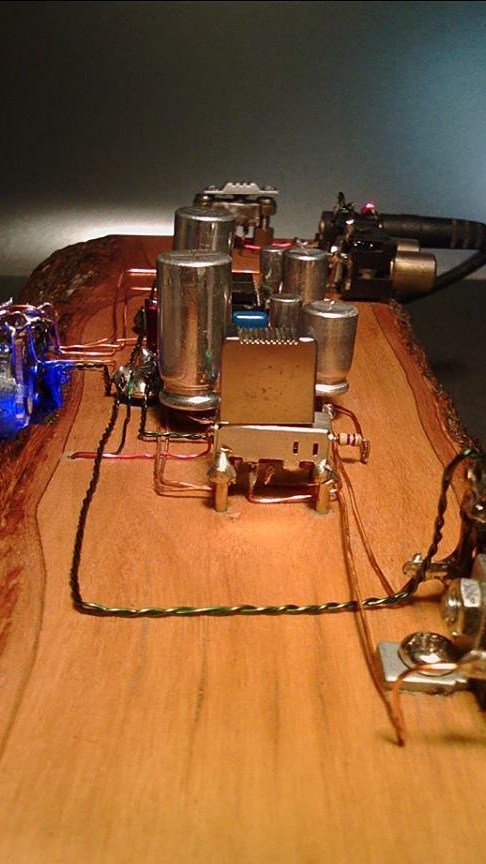
Let's watch a video about this amplifier:

